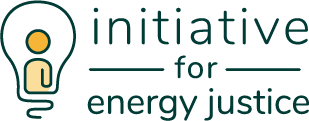The Case for an Energy Justice Workbook and an Energy Justice Scorecard
In recent years, advocates, academics, and policymakers have begun to navigate the transition away from fossil fuels to clean and renewable energy sources. As policies emerge within this transition, stakeholders have debated whether, and how, such policies can (or even should) include issues of equity and social justice. Marginalized communities, which include communities at the frontline of pollution and climate change (“frontline communities”), and those historically and presently disenfranchised by racial, economic, and social inequity, have emphasized the need for equity and justice in the creation of new energy policies. Similarly, some policy makers have expressed interest in equity-centered policy but lack detailed guidance on how to do so.
Despite a growing desire for equity-centered energy policy, a lack of consistent terminology concerning energy equity and energy justice hinders the ability of stakeholders to advance clear policy. This Workbook addresses this gap. The Workbook builds a bridge between theories and practices of energy justice, and develops an Energy Justice Scorecard that provides guideposts to advance equity-centered energy policy. The key audiences for this Workbook include community advocates and policymakers. The Workbook should serve as a guide for activists and advocates on the ground working for energy justice at the state level, and to assist policymakers seeking to understand how to incorporate energy justice into their emerging energy policy frameworks.
What is Energy Justice?
Energy justice cannot be separated from environmental justice and climate justice. The complex lived experiences of marginalized communities reveal an interconnectedness among environmental, climate, and energy justice that would seem to require that energy policy acknowledge the unique ways that environmental harms and climate-related harms affect frontline communities. As such, building on the environmental justice and climate change movements, legal and social science scholars have introduced the concept of “energy justice,” which encompasses tenets of procedural, distributive, and recognition justice sought by advocates, academics, and policymakers.
Energy justice refers to the goal of achieving equity in both the social and economic participation in the energy system, while also remediating social, economic, and health burdens on marginalized communities. Energy justice explicitly centers the concerns of frontline communities and aims to make energy more accessible, affordable, clean, and democratically managed for all communities. Those involved in the movement for the transition away from fossil fuels to renewable energy often frame energy justice, energy equity, and energy democracy as a part of a broader “just transition” to a low-carbon regenerative economy that will remedy the injustices of the fossil-fuel energy system and extractive economy across multiple sectors. This Workbook uses the term “energy justice” because it synthesizes and lift ups the traditions of justice-based scholarship, and draws on recent activist practice around energy equity and energy democracy.
Workbook Organization
The Workbook is broken up into three sections. Section 1 provides an overview and synthesis of energy justice, as discussed by frontline advocates, social scientists, and legal scholars. This section begins by defining and summarizing fundamental energy justice principles and terms in order to create understanding and commonality among key players working to advance principles of energy justice. Section 1 goes on to analyze the principles and terms unique to practitioners, scholars, and policymakers independently.
The authors note that advocates tend to center the voices of frontline communities and attempt to remedy past harms faced by these communities due to the current energy system. Conversely, academic and legal scholars tend to focus on procedural and distributive justice. While the research shows commonality in their emphasis on procedural and distributive justice, the analytical frames differ in two regards: (1) the scope of energy justice and its connection to related “justice” concepts; and (2) the centering of traditionally excluded voices in energy policy. The Workbook combines these separate approaches to energy justice within a unified framework that draws on the practitioners’ unique perspectives as well as the theoretical approaches of social scientists and legal scholars.
Section 2 introduces an Energy Justice Scorecard created by the Initiative for Energy Justice. The Scorecard is intended to help those engaging with the energy transition to determine if a policy incorporates energy justice principles, specifically procedural and distributive justice. The Scorecard offers five energy justice indicators: 1) Process: Have marginalized communities participated meaningfully in the policymaking process with sufficient support?; 2) Restoration: Does the policy aim to remedy prior and present harms faced by communities negatively impacted by the energy system?; 3) Decision-making: Does the policy center the decision-making of marginalized communities?; 4) Benefits: Does the policy center economic, social, or health benefits for marginalized communities?; and 5) Access: Does the policy make energy more accessible and affordable to marginalized communities? The scorer then sums the value of each indicator (1 to 5 based on congruence to the principle) to determine the effectiveness of the policy as it relates to energy justice.
Applying the Energy Justice Scorecard: California and New York Case Studies
In order to demonstrate the applicability of the Scorecard to various policy initiatives, Section 3 uses the Scorecard to evaluate emerging community energy policies in both California and New York. Community energy (or community solar) refers to offsite structures that generate power shared by multiple electricity customers. Community energy policies that achieve energy justice strive to supply local communities with renewable energy in an integrated and equitable way, for example through community generated, owned, or managed energy systems.
The California Case Study
Section 3 begins with a focus on two community energy programs in California, the Enhanced Community Renewables (ECR) program and the Community Solar Green Tariff (CSGT). Both of these policies were projected to benefit customers otherwise excluded from other renewable energy programs. More specifically, ECR was intended to provide communities with the benefits of access to nearby offsite renewable energy, while CSGT was intended to provide alternatives to net energy metering and ensure the growth of distributed renewable energy among frontline communities.
ECR allows customers to contract directly with a developer and subscribe to a specific project for all or a portion of their energy needs. Customers receive a credit from the investor-owned utility (IOU) based on their subscription to project developed by a third-party. Unfortunately, ECR did not lead to any realized projects and receives only 7 out of 25 when applied to the Scorecard. The ECR program failed for three main reasons: (1) the conversation around the ECR was continually delayed, (2) the pricing structure was flawed, and (3) there were barriers in the process and mechanisms of participation leading to a lack of procedural and distributive justice. In the end, ECR failed to accomplish the goal of expanding access to renewable energy for Californians unable to benefit from onsite solar.
CSGT is projected to be fully implemented in 2020. CSGT will allow individuals to subscribe to solar energy associated with new installations within five miles of their community and will provide residential customers on the CSGT 100% renewable energy at a 20% discount. This encourages communities to find new methods for maximizing the use of rooftop space and other areas for solar production. The CSGT receives a 14 out of 25 when applied to the Scorecard. The CSGT will allow for more energy access to low-income communities, but still scores low in benefits to frontline communities and access to decision-making by these communities.
Despite the relatively low scores of both the ECR and CSGT programs, the Scorecard gives future community solar policymakers the ability to foresee potential barriers and inequities, and create new solutions to avoid these barriers.
The New York Case Study
The authors also use the Energy Justice Scorecard to score New York’s Community Distributed Generation (CDG) program, which ultimately receives a score of 14 out of 25. CDG was created as a part of Reforming the Energy Vision (REV), a regulatory reform platform that was created in response to Superstorm Sandy, an unprecedented storm that led to widespread power outages and revealed vulnerabilities in New York’s energy system.
CDG is one of the many dockets created under REV. Like the ECR and CGST policies developed in California, CDG allows electricity customers to participate in an offsite energy generation project. While CDG provided an avenue for participation from frontline communities in the policymaking process, ultimate policy decisions about CDG design failed to reflect that participation. In particular, CDG failed to center economic, social, and health benefits for traditionally excluded populations.
Key Takeaways from Case Studies
The California and New York case studies share similarities in demonstrating three key takeaways of what is necessary for community energy policies that achieve energy justice: (1) community participation in policy development, (2) sound energy pricing and valuation structures, and (3) sustainable business models that balance both targeting priority customers and consumer protection. The case studies also point to three objectives required for equitable community solar: (1) project feasibility, (2) equitable participation, and (3) community control.
The use of the Scorecard in each case study helps to validate the root causes for the successes and failures of a given policy. This tool gives actors the ability to evaluate existing energy policies as well as inform their approach to proposed energy policy. This Workbook hopes to not only bridge the gaps among activists, academics, and policymakers, but also to provide an accessible tool to facilitate thoughtful conversations, creations, and applications of energy policies that encompass the field of study and practice of energy justice.

Photo Credits (in order of appearance)
1) Dubovan, Christian. Turned on clear glass light bulb. Unsplash. https://unsplash.com/photos/gxsRL8B_ZqE. accessed 5 December 2019.
2) Heras, Stacey. “Initiative for Energy Justice working in groups to shape policy.” 2019. JPEG.
